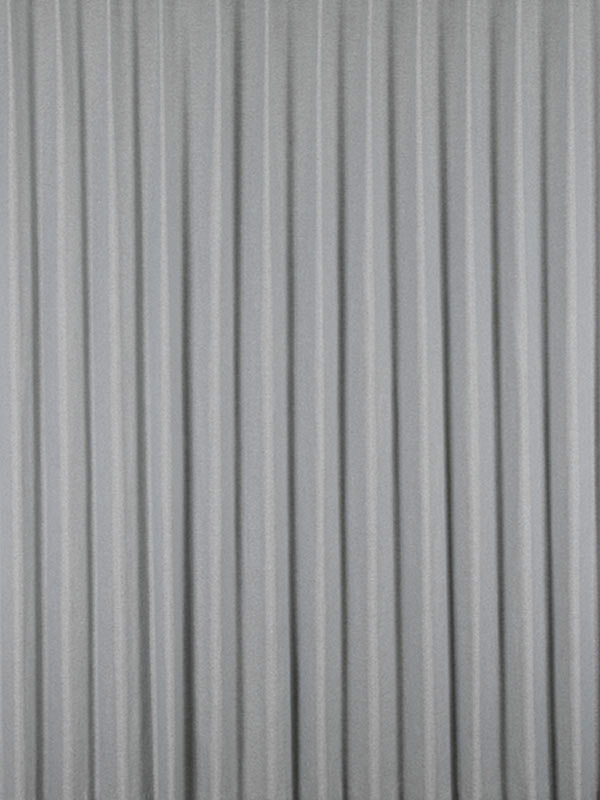The thickness and density of blackout curtain fabric are one of the important factors that determine its light-blocking performance. The thickness and density of the fabric directly affect the degree of light transmission, shading effect and other additional functions (such as heat insulation, sound insulation, etc.). Here are the specific effects of thickness and density on light blocking performance:
Generally speaking, a thicker fabric is more effective at blocking outside light because it creates more of a barrier between the layers of fabric, reducing the chance of light getting through. Heavy fabrics (such as heavy-duty polyester, cotton or coated fabrics) can effectively reduce the amount of light transmitted due to their weight and structural characteristics, providing a higher shading rate.
If you need complete blackout (for a bedroom or cinema, for example), thicker fabrics are usually better suited. Generally, if the thickness of the fabric of blackout curtains exceeds a certain standard (such as 300-400 grams/square meter), its blackout effect will be significantly improved. For example, thicker shade cloth can usually provide more than 90% shading, or even close to 100%.
Some thick fabrics may look heavy, but may not block light effectively if the structure between the fibers is loose. Therefore, thickness and density are factors that need to be considered together.
A higher density (i.e. how densely packed the fibers are per unit area) of a fabric usually means it is more effective at blocking light. High-density fabrics (such as densely woven fabrics) can reduce the chance of light transmission through closely arranged fibers, the interweaving structure of the fabric, and the gaps between fibers.
High-density fabrics usually have a more tightly woven structure, making it less likely to have small gaps or holes in their surface, thereby reducing the possibility of light transmitting through these holes.
For example, polyester (polyester) or polyester-cotton blends can significantly improve their light-blocking properties when woven at a high density. In this case, density and fiber structure affect the shading effect more than thickness. By being densely woven, the fabric creates a tight barrier that reduces light penetration.

Thickness and density usually complement each other, and a good shading effect requires both to work together. For example, a piece of fabric may be thick enough, but if the weave is loose, light may still be able to penetrate it. And if the fabric is very dense, but not thick enough, it may still have weak spots when light penetrates it. Therefore, choosing fabrics with high density and appropriate thickness can maximize the shading effect.
Some high-density fabrics (such as polyester, polyester, etc.) may have special coatings (such as PVC, polyurethane coatings) added to enhance light-shielding properties. In this case, the combination of thickness and density of the coated fabric not only improves the shading effect, but also provides additional functions (such as waterproofing, sound insulation, etc.).
These synthetic fiber materials usually have a higher density and thicker structure, so they have greater light blocking properties, especially if they are multi-layered or coated. Thick polyester cloth has a higher density and can effectively block ultraviolet rays and strong external light.
These natural materials are generally more breathable than synthetic materials (such as polyester), and while the fabric thickness of natural fibers can increase the light-blocking effect, they tend to be less dense and may require special treatment to achieve high light-blocking properties.
Silk fabrics are thinner and less dense, and usually require the assistance of multiple layers or special coatings to achieve better shading effects. Blended fabrics, such as cotton-polyester blends, often provide better light protection and comfort by combining the benefits of natural and synthetic fibers.
For environments that require complete light blackout, such as a bedroom or home theater, choosing a thicker, high-density fabric is your best choice. This type of fabric can effectively block outside light and ensure a dark environment. For example, 100% blackout cloth or high-density fabrics treated with PVC coating are often used in these places.
For places that don’t require complete blackout but need to reduce light, you can choose medium-thickness and medium-density fabrics that can effectively regulate light while maintaining breathability and aesthetics.
In areas with high temperatures and strong sunlight, choosing thick and dense blackout curtains not only helps to block light, but also effectively insulates and helps keep the room cool.
The thickness and density of blackout curtain fabrics are key factors that determine their blackout effect. Generally speaking, thicker and denser fabrics block light more effectively and provide better light protection. At the same time, factors such as the material of the fabric, the weaving process and whether to add a coating will also have an important impact on the final light-shielding performance. According to different needs (such as complete shading, partial shading, heat insulation, sound insulation, etc.), you can choose blackout curtain fabrics with appropriate thickness and density to ensure the best functional effect.

 中文简体
中文简体











